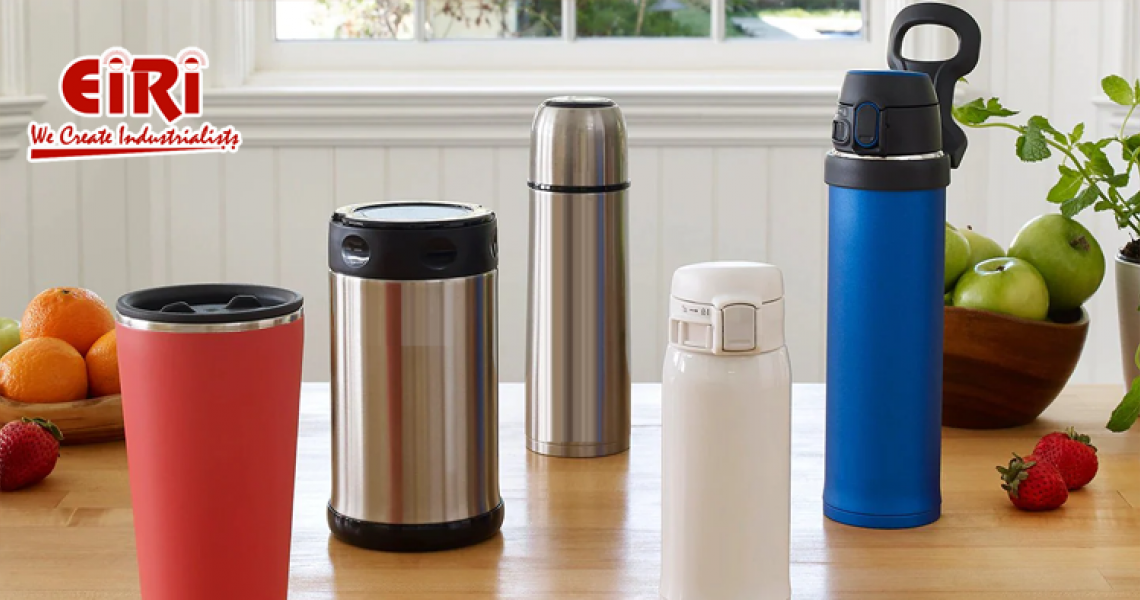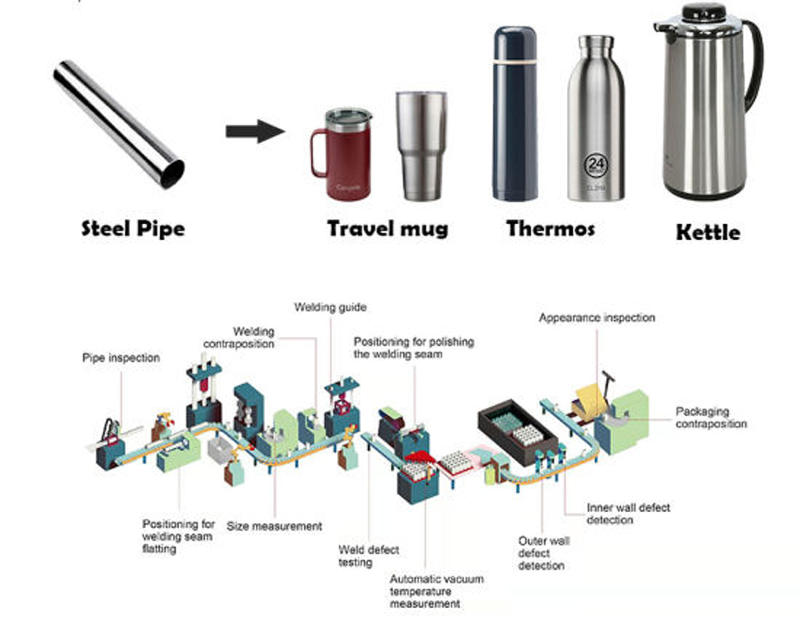Stainless Steel Vacuum Bottles: A Fusion of Safety, Style, and Sustainability

Stainless steel vacuum bottles have emerged as the epitome of hydration solutions, blending safety, style, and sustainability. In a world increasingly conscious of health and environmental concerns, these bottles have become a trendsetter in the beverage container industry. This overview delves into the key reasons behind the popularity of stainless steel vacuum bottles and explores the factors driving the growth of the vacuum flask market.
The Stainless Steel Vacuum Bottle Market anticipates robust growth, with a projected rise from USD 5.2 billion in 2023 to USD 9.3 billion in 2032, showcasing a steady 6.0% Compound Annual Growth Rate (CAGR).
One of the primary reasons for the soaring demand for stainless steel water bottles is their safety profile. These bottles are BPA-free, eliminating the risks associated with harmful chemicals commonly found in plastic containers. BPA, known for causing a range of health issues, including heart disease, diabetes, and memory loss, is absent in stainless steel bottles, making them a preferred choice recommended by scientists and endorsed by the FDA.
Beyond safety, stainless steel vacuum bottles excel in providing superior insulation for both hot and cold beverages. These bottles are equipped with a vacuum flask or thermos technology, featuring a double-walled insulation structure. The outer chamber consists of a glass layer with a vacuum in between, preventing heat transfer by conduction, convection, and radiation. This insulation not only maintains the desired temperature of the contents for an extended period but also ensures a barrier against external elements.

Stainless steel water bottles boast an impressive lifespan, making them a cost-effective choice in the long run. Crafted from iron and chromium alloys, these bottles offer increased resistance to corrosion, eliminating the risk of leaching harmful substances into the beverages. This longevity not only contributes to environmental sustainability by reducing waste but also provides users with a durable and reliable hydration solution.
Industry Insights: Vacuum Flask Market:
The vacuum flask market, encompassing the production, distribution, and sale of insulated containers, has witnessed steady growth driven by the evolving needs of consumers. The market, also known as the insulated bottles or thermos flasks industry, is characterized by double-walled insulation, often separated by an inert gas layer or a vacuum. Key factors contributing to the market's growth include the demand for portable and temperature-preserving solutions for beverages and food.
Driving Factors:
The Stainless Steel Vacuum Bottle Market experiences robust growth driven by health-conscious and eco-friendly consumer preferences. The surge in demand for reusable, durable alternatives aligns with lifestyle shifts, emphasizing sustainability.
- Health and Sustainability: A shift in consumer lifestyles towards health-consciousness and eco-friendly choices boosts the popularity of stainless steel bottles as a reusable and durable option.
- Superior Insulation: Stainless steel's exceptional insulation properties, ensuring prolonged temperature retention, attract users seeking reliable hydration on the go.
- Eco-Friendly Appeal: The product's eco-friendly nature and resistance to rust and corrosion enhance its appeal, positioning it as a sustainable choice against plastic bottles.
- On-the-Go Lifestyle: The need for portable, easy-to-use solutions that maintain the temperature of beverages while on the move has been a significant driver for the vacuum flask market.
- Innovation in Design: Continuous innovation in design and materials has resulted in lighter, more resilient, and visually appealing vacuum flasks. Manufacturers constantly introduce features such as leak-proof lids, improved insulation, and a variety of sizes and materials to cater to diverse consumer preferences.
- Outdoor and Travel Trends: Increased outdoor activities and travel contribute to the rising popularity of stainless steel vacuum bottles as essential accessories for hydration.
Challenges Impacting Market Dynamics
- Competition from Alternatives: Market faces competition from alternative materials like plastic or glass bottles, challenging widespread adoption.
- Pricing Concerns: Stainless steel bottles are often more expensive, posing pricing concerns and limiting broader consumer adoption.
- Limited Customization: Limited design variations and customization options restrict appeal among diverse consumer segments.
- Perceived Weight and Bulkiness: Compared to lighter materials, the perceived weight and bulkiness of stainless steel affect portability, impacting user convenience.
- Durability Concerns: Issues related to potential dents, scratches, or susceptibility to heat transfer pose durability concerns, influencing purchase decisions.
Growth Opportunities
- Sustainability Emphasis: Increasing emphasis on sustainability drives demand for reusable and durable stainless steel bottles.
- Innovative Design: Innovations in design, including lightweight and sleeker models, expand market accessibility and appeal.
- Targeted Marketing: Targeted marketing towards outdoor enthusiasts and health-conscious consumers taps into untapped market segments.
- Customization Options: Personalized designs and branding options cater to niche markets and enhance product appeal.
- Collaborations and Endorsements: Collaborations with influencers and endorsements from health and fitness industries amplify product visibility and credibility.
Trending Dynamics
- Sustainability Focus: Sustainability remains a prominent trend, with increasing demand for eco-friendly, reusable alternatives.
- Customization Trend: Customization gains traction, offering personalized designs, colors, and sizes, aligning with individual preferences.
- Enhanced Insulation Technologies: Advancements in insulation technologies ensuring extended temperature retention influence purchasing decisions.
- Collaboration Impact: Collaboration with outdoor and fitness industries amplifies product visibility, aligning with lifestyle trends.
- Health and Environmental Concerns: Rising health and environmental concerns drive demand for stainless steel bottles, reducing pollution levels and promoting sustainable choices.
Initiatives for Non-Plastic Products:
- FDA Regulations: Initiatives like FDA regulations banning BPA in specific product lines contribute to the growth of the stainless steel vacuum bottle market.
- Non-Chemical Material: Stainless steel, being a durable, bacteria-free, and non-chemical material, gains preference over plastic, aligning with health and environmental concerns.
- Reducing Pollution Levels: Stainless steel bottles reduce pollution levels compared to non-recyclable plastic bottles, contributing to environmental sustainability.
- Consumer Awareness: Increasing consumer awareness of the harmful nature of plastic encourages the shift towards stainless steel alternatives.










